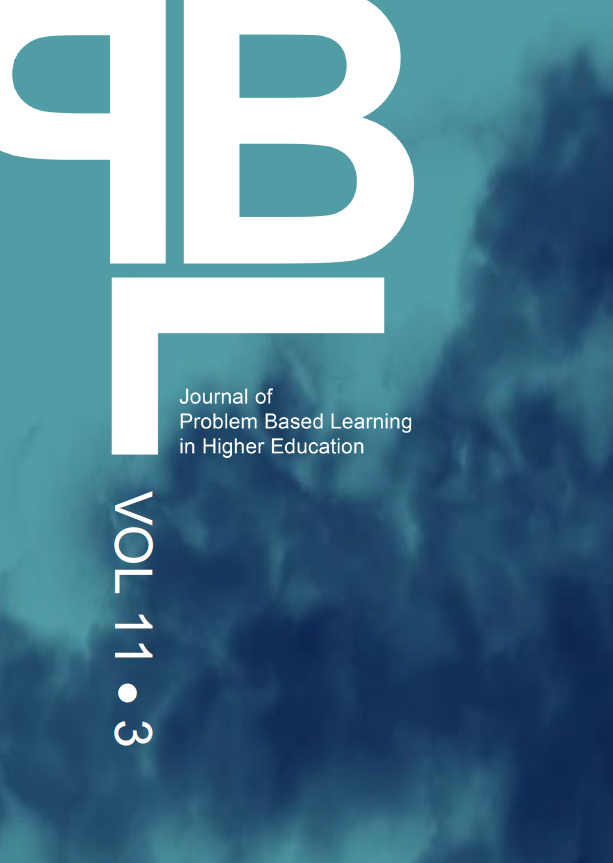Abstract
Climate change put most species’ survival in danger because it substantially affects the climate in which the species live, the quality of the water they drink, as well as the temperature of the air or water. When climate change increases the temperature of the climate, excessive evaporation occurs in lands, lakes, seas, and oceans. Our purpose in this paper is to introduce a mathematical modelling activity embedded in Problem Based Learning (PBL) that allows students to investigate factors related to evaporation. Mathematical modelling is a popular technique of teaching mathematic concepts and skills and a method of inquiry about scientific phenomena that interests scientists. In the present activity, students use secondary data from trusted websites to test their hypotheses. Students are engaged in analyzing and interpreting data, generating and testing models, and discussing and presenting findings with their peers. The activity allows students the opportunity to examine the relationship between variables and predict one variable using the other. The activity has the potential to foster students’ computational and higher-order thinking skills.
References
Alpaslan, M. M. (2017). Levers and mixtures: An integrated science and mathematics activity to solve problems. Science Activities, 54(2), 38-47. https://doi.org/10.1080/00368121.2017.1319321
Isik, H., & Alpaslan, M. M. (2018). Planning a lab lesson on the law of thermal conduction with learning by preparing to teach design. Science Activities, 55(3-4), 149-155. https://doi.org/10.1080/00368121.2018.1564729
Ayar, M., & Yalvac, B. (2010). A sociological standpoint to authentic scientific practices and its role in school science teaching. Ahi Evran Uni. Kirsehir Journal of Education (KEFAD) 11(4), 113-127.
Ayar, M. C., & Yalvac, B. (2016). Lessons learned: Authenticity, interdisciplinary, and mentoring for STEM learning environments, International Journal of Education in Mathematics, Science, and Technology, 4(1), 30-43.
Ayar, M. C., Bauchspies, W. K., & Yalvac, B. (2014). Exploring social dynamics in school science context. SAGE Open, 4(3), 1-10. https://doi.org/10.1177/2158244014550619
Coştu, B., Ayas, A., & Niaz, M. (2010). Promoting conceptual change in first year students’ understanding of evaporation. Chemistry Education Research and Practice, 11(1), 5-16.
Erbaş, A. K., Kertil, M., Çetinkaya, B., Çakıroğlu, E., Alacacı, C., & Baş, S. (2014). Mathematical modeling in mathematics education Basic concepts and different approaches. Educational Sciences: Theory & Practice, 14(4), 1621-1627.
Haines, C., & Crouch, R. (2007). Mathematical modelling and applications: Ability and competence frameworks. In Modelling and applications in mathematics education (pp. 417-424). Springer, Boston, MA.
Härmälä-Braskén, A. S., Hemmi, K., & Kurtén, B. (2020). Misconceptions in chemistry among Finnish prospective primary school teachers–a long-term study. International Journal of Science Education, 42(9), 1447-1464. https://doi.org/10.1080/09500693.2020.1765046
International Glossary of Hydrology. (2012). International glossary of hydrology. Switzerland: World Meteorological Organization. Accessed December 2021. https://unesdoc.unesco.org/ark:/48223/pf0000221862
Johansson, N., Nøhr, S. B., & Stentoft, D. (2020). A scoping review of the relation between problem-based learning and professional identity development in medical education. Journal of Problem Based Learning in Higher Education, 8(2), 25-41. https://doi.org/10.5278/ojs.jpblhe.v8i2.3554
Kaiser, G. (2020). Mathematical modelling and applications in education. In S. Lerman (Ed.), Encyclopedia of Mathematics Education (pp. 553–561). Springer. https://doi.org/10.1007/978-3-030-15789-0_101
Karslı, F., & Ayas, A. (2013). Prospective science teachers’ alternative conceptions about the chemistry issues. Necatibey Eğitim Fakültesi Elektronik Fen ve Matematik Eğitimi Dergisi, 7(2), 284-313.
Karsli, F., & Ayas, A. (2017). Effect of the enriched laboratory guide material on prospective science teachers’ conceptual change: Evaporation and boiling. YYU Journal of Education Faculty, 14(1), 529-561.
Mhawej, M., Fadel, A., & Faour, G. (2020). Evaporation rates in a vital lake: a 34-year assessment for the Karaoun Lake. International Journal of Remote Sensing, 41(14), 5321-5337. https://doi.org/10.1080/01431161.2020.1739354
MGM. (2017). Climate categories. Retrieved October 21, 2022, from: http://www.mgm.gov.tr/FILES/iklim/iklim_siniflandirmalari.pdf.
Microsoft (n.d.). Add a trend or moving average line to a chart. Retrieved December 1, 2021, from https://support.microsoft.com/en-us/office/add-a-trend-or-moving-average-line-to-a-chart-fa59f86c-5852-4b68-a6d4-901a745842ad
National Oceanic and Atmospheric Administration (2018). Climate data resources. Retrieved December 15, 2021, from https://www.noaa.gov/education/resource-collections/data/climate
NGSS Lead States. (2013). Next Generation Science Standards: For States, By States. Washington, DC: The National Academies Press.
Tao, P., Ni, G., Song, C., Shang, W., Wu, J., Zhu, J., ... & Deng, T. (2018). Solar-driven interfacial evaporation. Nature Energy, 3(12), 1031-1041. https://doi.org/10.1038/s41560-018-0260-7
Tsikalas, T., Stamovlasis, D., & Papageorgiou, G. (2014). Mental representations of 12 year-old children about boiling and evaporation: A probabilistic association with convergent and divergent thinking. Preschool and Primary Education, 2(1), 17-26.
Wang, T. L., & Tseng, Y. K. (2018). The comparative effectiveness of physical, virtual, and virtual-physical manipulatives on third-grade students’ science achievement and conceptual understanding of evaporation and condensation. International Journal of Science and Mathematics Education, 16, 203-219. https://doi.org/10.1007/s10763-016-9774-2
Yoro, K. O., & Daramola, M. O. (2020). CO2 emission sources, greenhouse gases, and the climate change effect. In M. R. Rahimpour, M. A. Makarem, & M. Farsi (Eds.) Advances in carbon capture (pp. 3-28). Woodhead Publishing. https://doi.org/10.1016/B978-0-12-819657-1.00001-3

This work is licensed under a Creative Commons Attribution 4.0 International License.
Copyright (c) 2022 Muhammet Mustafa Alpaslan, Bugrahan Yalvac
